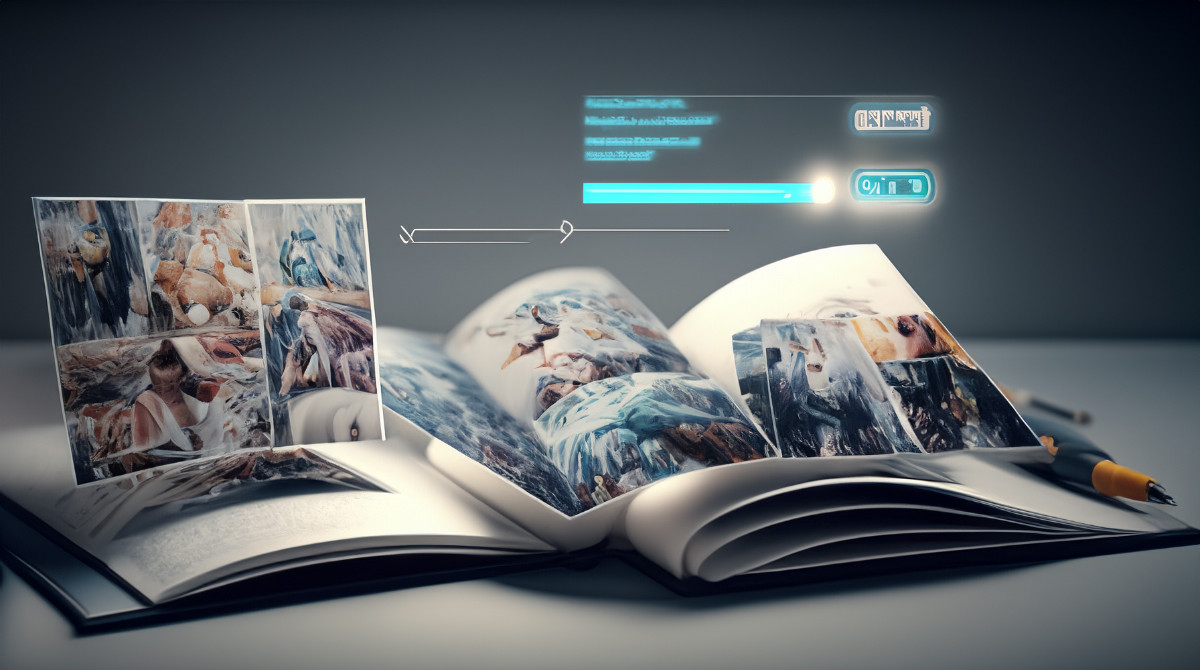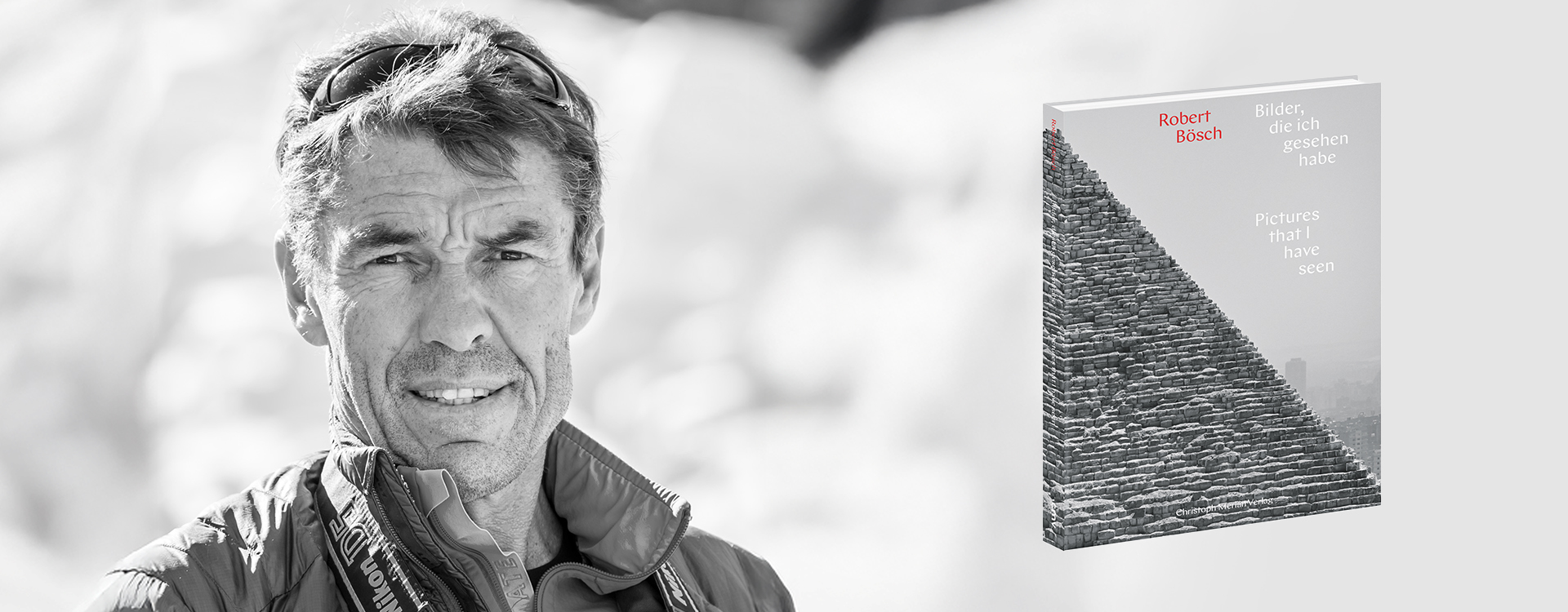Artificial intelligence (AI) has triggered a significant change in various areas of society in recent years. This technology, which gives machines the ability to learn and perform tasks autonomously, has not only changed the way we work, but also the way we live – and we are only at the beginning of this development!
At Bookfactory, we have an open and unbiased attitude towards technological change. We try to utilise and apply AI pragmatically where it can make our lives easier or improve processes – always in compliance with data protection standards and legal requirements, of course. At the same time, we attach great importance to maintaining our authenticity and not compromising the emotionality of our products. Dealing with AI tools ultimately requires a sure instinct that we pay great attention to.
In which areas do we use AI?
We use artificial intelligence in the online editor
- The Photo book Smart Editor allows you to automatically create a photo book using AI and algorithm-supported image recognition and analysis (selection of the best photos and logical grouping as well as automatic creation of layouts and optimal placement and cropping of the photos)
- For some Photo cards templates in the online editor, you can use the AI Text Generator to create automatically generated texts (choice of card type, writing style and text length)
We use AI in marketing
- Für Übersetzungen nutzen wir den DeepL Translator. Dieser übersetzt Texte mit Hilfe künstlicher neuronaler Netze.
- Teilweise lassen wir uns von KI bei der Erstellung von Texten und Bildern unterstützen. Dazu prüfen wir laufend verschiedene Tools für unterschiedliche Anwendungszwecke.
Artificial intelligence for image optimisation
- We are working on a project for fully automated and intelligent image optimisation. This involves using algorithms to analyse and optimise images and to correct brightness, contrast and colours.
How can AI be used in connection with our products?
Image optimisation
The paid tool Topaz Photo AI can be used to optimise the quality of Photos. The sharpness can be increased, the noise reduced or the resolution increased without any loss of quality.
https://www.topazlabs.com/topaz-photo-ai
Application example: A small section of a photo has been selected and the resolution is therefore too low. The image can be scaled up to achieve a sufficiently high resolution for a Wall art, for example.
With some restrictions, there are also free online tools for image optimisation:
- https://imgupscaler.media.io
- https://vanceai.com
- https://create.pixelcut.ai/upscaler
- https://www.upscale.media

Topaz Photo AI (Upscale) was used to upscale a section of an image to create a Wall art in high resolution
Image editing
With the «Generative Fill» function from Adobe, image content can be added, removed, expanded or images can be created from scratch.
https://www.adobe.com/uk/products/photoshop/generative-fill.html
Application example: The photo does not have the desired format and needs to be enlarged or an object in the image needs to be removed.
The free online tool removebg can be used to remove and replace photo backgrounds.
Application example: The background is to be blurred or completely replaced with a colour.

Adobe Photoshop 2024 (Generative Fill) was used to add a curtain to the image
Image generation
Many image generation tools use the text-to-image model. This involves creating a prompt, i.e. a descriptive text, in order to generate an image on this basis. Creating prompts for good and desired results can be very time-consuming. We believe that this is a new area of image generation in its own right and agree with Boris Eldagsen’s statement «PROMTOGRAPHY is not Photography».
Boris Eldagsen has won the «Sony World Photography Awards 2023» with an AI-generated image, thereby launching the debate on photography and generated images:
https://www.eldagsen.com/sony-world-photography-awards-2023/
Perhaps that is why it is so exciting to see how new images are created with a lot of creativity and exciting styles. The resolution of images created with free tools is often low and the images are watermarked. Comprehensive tools such as Midjourney, which already create remarkably photorealistic images, are more complex to use and involve costs.
Midjourney Community Showcase:
https://www.midjourney.com/showcase/recent/
Further text-to-image tools:
- https://stablediffusionweb.com (Stable Diffusion Online Text-to-Image)
- https://www.bing.com/create (Microsoft Bing Image Creator supported by DALL-E)
- https://stability.ai/stable-diffusion (Clipdrop and DreamStudio by stability.ai)
Art generators
One area we are watching with interest is the creation of artistic images based on an existing Photos.
- https://www.befunky.com/features/photo-to-art/ (Transform Your Photo to Art in One Click)
- https://starryai.com/ (Create art with AI)
Application example: Create an artistic image of a portrait.
Experiments and playful applications
With Scribble Diffusion, a photo is created using a scribbled image and a descriptive text. Each time you click on «Go» a new variant is generated. The resolution of the generated Photos is very low, but the tool is very suitable for first playful experiments with prompts. It also shows how several presets can be used in combination (multimodality) to create an image. In this case, the scribbled image combined with the text input.

Scribble Diffusion is suitable for first playful experiments with prompts
Advances in artificial intelligence have revolutionised the way content can be created. As we continue to observe and explore the fascinating possibilities of this technology, it remains crucial for us to maintain a responsible approach.
The cover image was created with Adobe Photoshop 2024 Generative Fill. Prompt: «Please create an image of how an artificial intelligence (AI) designs a Photo book»





